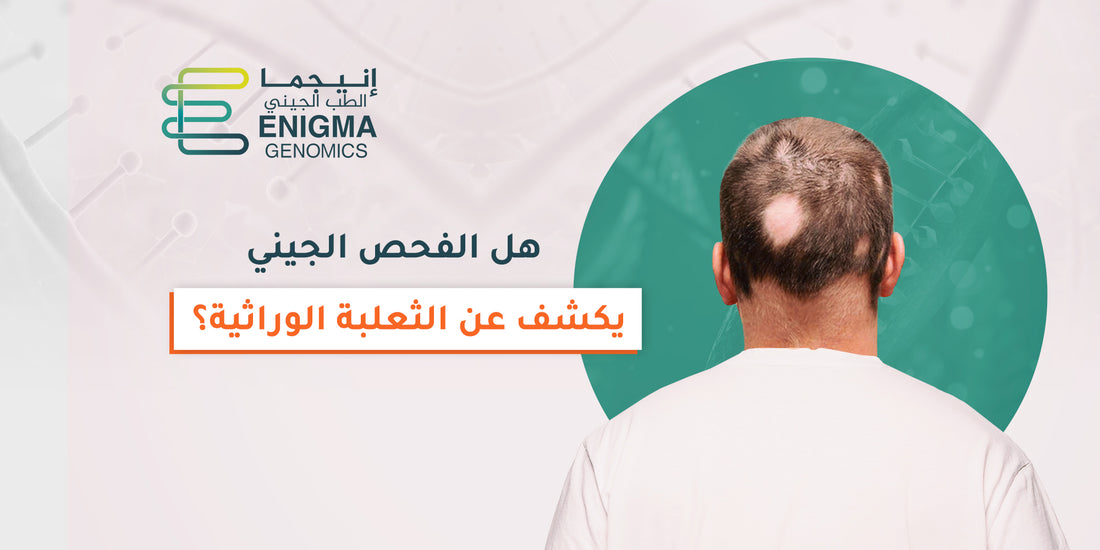Alopecia, affects 0.5-2% of men and women worldwide and can manifest at any age after puberty, but the risk of developing it rises with age. It may start in the twenties or thirties, but it typically affects women during menopause, while symptoms usually start to show in men around age 50.
The forms of alopecia in men differ from women, and over time, it can have detrimental psychological repercussions like anxiety, depression, and a decline in social contact. Particularly when its symptoms first arise at a young age, these effects are more noticeable in women.
This article will discuss several alopecia types, their symptoms, underlying causes, available treatments, and the role that genetic testing plays in the early detection of hereditary alopecia.
What is alopecia?
Alopecia is an autoimmune disease that causes hair loss in different patterns in men than in women.
Alopecia signs and symptoms
Men typically experience hair thinning at the top of the head (vertex or crown), hairline receding backward in the shape of an M, and hair loss starting above both temples. This condition is called male pattern baldness, and it may be partial baldness or develop into complete baldness.
Although the situation is different in women, thinning hair is seen at the top and and the middle part widens without the hairline receding back. This condition is called female pattern baldness and rarely turns into complete baldness.
Alopecia can cause hair loss in any part of the body, including the face and eyebrows, and is not just confined to the scalp.
What causes alopecia?
Alopecia may be brought on by:
Genetics
Androgenetic alopecia is one of the types of alopecia and affects both men and women due to changes in the AR gene, which controls the body's response to androgens like dihydrotestosterone. This results in its excessive production above the normal rate and affects the hair follicles, delaying the growth of new hair instead of speeding it up.
Other genes that can alter to cause alopecia, include the following:
- PTPN22, HLA-DRA, HLA-DRB1, and AIRE which are immune-related genes.
- MT-ND1, COL6A2, and POLH, genes with different physiological functions.
- KRT82, KRTCAP3, and DECR2 genes.
If you have first-degree relatives who have alopecia or baldness, your risk of having it rises as well.
Other disorders like vitiligo, psoriasis, and others are caused by mutations in these genes.
Environmental factors
Dihydrotestosterone is one of the androgens that cause puberty signs in both men and women, and it can cause alopecia when levels are greater than usual.
Alopecia may also arise from other medical conditions such coronary artery disease, prostatic enlargement, prostate cancer, diabetes, obesity, high blood pressure, and polycystic ovary syndrome in women.
Alopecia Diagnosis
The doctor may do the following procedures to confirm alopecia in both men and women:
1. Examine your scalp for signs of infection.
2. Obtaining a sample of the scalp or hair for laboratory testing to verify the diagnosis.
3. Blood test to be sure you don't have any other autoimmune diseases.
Alopecia is not a contagious condition. Alopecia is not always present in hair loss. 50–100 hairs a day are often lost on average, however they naturally regrow. But if you experience rapid hair loss that doesn't stop, this could be the first indication of alopecia, and you should see a doctor to find out whether this is the case.
Alopecia treatment
The severity of the condition will determine the best course of treatment for you, but there are some that have been approved by FDA to treat alopecia in both men and women in order to slow hair loss and progressively restore hair growth. These therapies include:
1. Medications
2. Hair transplant
3. the platelet-rich plasma
4. Red light therapy
5. Microneedles therapy
Genetic testing and alopecia
In order to ensure accurate diagnosis and determine the most suitable course of action for the condition depending on the type of gene mutations, genetic testing helps detect genetic changes that result in alopecia and hair loss such as Whole Exome Sequencing and Whole Genome Sequencing. If there are family members with alopecia or baldness, genetic testing can also be used to determine whether the condition will reoccur in the future so that the appropriate precautions can be taken.
In order to boost the cure rates for alopecia, genetic testing is also essential for creating new, better treatments.
Genetic counseling enables you to choose the right genetic test to identify the underlying reasons of your alopecia and to make the necessary suggestions once the test results are shown up. It is more likely that better and more efficient treatments will be available the earlier we identify the causes, especially if we have family members who are suffering from alopecia.

